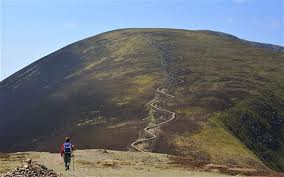 The Old Ways: A Journey On Foot by Robert Macfarlane
My rating: 5 of 5 stars
The Old Ways: A Journey On Foot by Robert Macfarlane
My rating: 5 of 5 stars
This book has taken its place in the top five of my pantheon of books. Macfarlane's lyrical prose allows us to see the mundane footpath placed in a greater cosmos, integrating the geographic passage of the path with its passage through time and community. For all paths are a statement of community, of the close passage of people to work, to home, to sea and to places unknown.
Read, from one of his closing paragraphs: "Images arise, gleaned from the miles on foot. White stones, white horses, flying islands, glowing eyes, mirages, drowned lands, dreams of flying, reversals and doubling, rights of way and rites of way, falcons and maps: the images move as brass spheres in an orrery, orbiting and converging in unlikely encounter. There is a flickering to order; gathered details are sealed by the stamp of the anterior. The land itself, filled with letters, words, texts, songs, signs and stories. And always, everywhere, the paths, spreading across counties and countries, recalled as pattern rather than as plot, bringing alignments and discrepancies elective affinities, shifts from familiar dispositions."
As excellent writing is wont to do, Mafarlane inspired in me a torrent of composition, some of which I have published and some of which remains to be seen.
I have been involved in trails, trail construction and hiking for most of my life, but Macfarlane's British perspective on paths and walking them was novel to me. Like most other things American, our trails are functional, utilitarian, planned. Starting with the name, they are "trails," not "paths." They have been designed for most efficient ascent, most pleasant passage with eye to overlook and flora and fauna, and engineered to handle literal parades of people (while working on the Appalachian Trail in the Franconia range, above treeline just past Greenleaf Hut, I once observed 145 people walk by me in a single day). Macfarlane's Old Ways are different entirely. These are paths that are organic to the land and the people living in them, winding, wandering and loosely arriving at a destination, or destinations that may or may not have been their original intent. One ambles along them, not to achieve a summit or capture an overlook in pictures, but to experience their passage through landscape and time.
I hope someday to walk a path like Macfarlane has. Reading this book has instilled in me a new way of thinking, a new way of experience the woods to which my life has been so closely tied.
